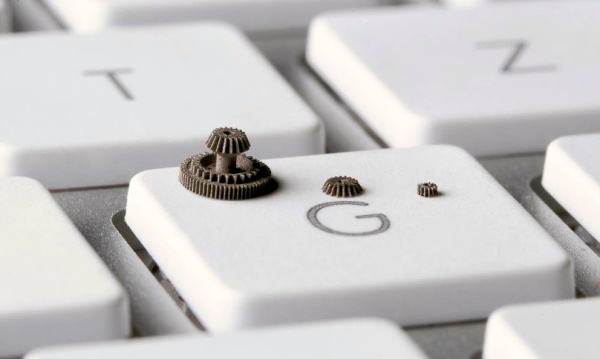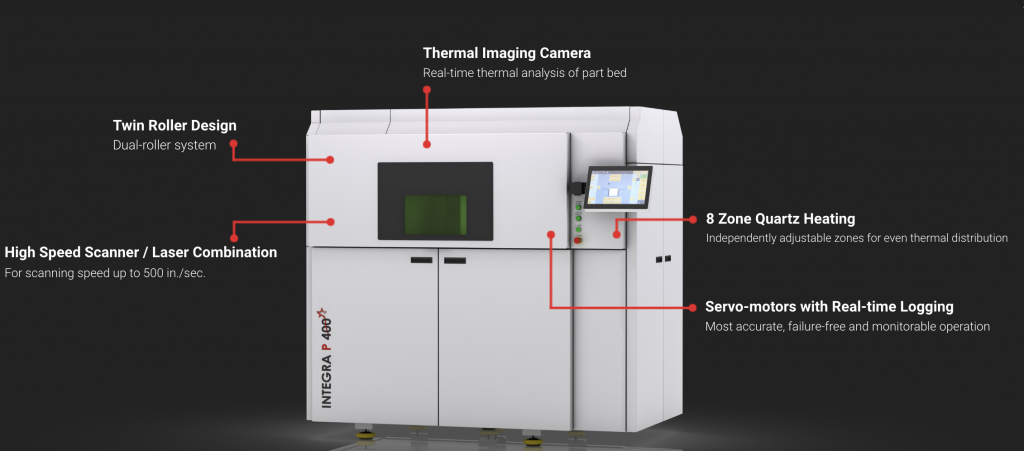EOS was an early pioneer in laser powder bed fusion (PBF) technology and currently stands as a leader in the space, though there are an increasing number of entrants. The company was established by Hans Langer, who previously worked as the Director of European Operations at U.S. laser beam steering company General Scanning before founding EOS (Electro Optical Systems) in 1990.
To develop his concept for a laser-based 3D printing technology, Langer received venture capital funding from a former development manager at BMW in order to meet the auto giant’s needs for an SLA 3D printer. By 1991, he delivered the STEREOS 400 to BMW and began establishing a European footprint before releasing the STEREOS 600 and even turning a profit just a year later.
The German company continued to grow and attract international attention such that, in just its third year, EOS was sued by 3D Systems, the original inventor of SLA, for patent infringement. In an interesting move, Langer sold 75 percent of his shares to the Zeiss Optical Group, leaving Zeiss to deal with the lawsuit and Langer free to oversee the developing of its first laser sintering system, the EOSINT 350.
EOS then partnered with Electrolux RD (which it eventually acquired) to develop direct metal laser sintering (DMLS), resulting in the creation of the EOSINT M 160. In other words, over the course of just four years, EOS had developed SLA, SLS and DMLS technology, but it didn’t stop with just resins, thermoplastic powder, and metal powder. In 1995, the firm’s first sand 3D printer, the EOSINT S 350, based on its EOSINT P 350 plastic system, was launched for printing sand cores and molds for metal casting.
After Carl Zeiss Jena, of Zeiss Optical, left the business in 1997, Langer bought back the rest of his shares and ultimately sold off the STEREOS SLA line to 3D Systems, while taking over the global patenting rights for laser sintering.
EOS continued to develop its technology, becoming the first to create a laser sintering printer with two lasers for sand printing in 1996 and plastic in 2000. In the process, the company also created new materials for SLS and DMLS, including glass-filled polyamides, copper, steel, aluminum filled polyamide, CobaltChrome, the world’s first flame-retardant SLS powder, and polyaryletherketone (PAEK) family powders as well.
EOS also implemented an interesting business model during this time, licensing its DMLS technology to Trumpf and Concept Laser (now owned by GE Additive), thus allowing for further proliferation of metal PBF.
Among other collaborations and innovations, the German firm partnered with Materialise, seeing SLS and DMLS attain greater adoption through its use in 3D printing service bureaus. This really signifies some of the first batch production deployed with 3D printing. EOS also worked with 3D-Micromac AG to create a process for 3D printing small metal parts with layers as fine as 1 µm, which is unheard of in metal PBF. EOS also partnered with Cookson Precious Metals Ltd on the PRECIOUS M 080 for printing precious metals, such as gold, for the jewelry industry.
Throughout this time, DMLS, along with other flavors of metal PBF, has increased in adoption and, though it as improved, we see manufacturers like EOS work on developing enhanced process monitoring and quality control techniques. EOS was awarded ISO 9001 certification in 1998, but it wasn’t until 2007 that the company launched its EOSTATE software for in-process quality assurance. This would herald a new era of working to develop repeatability and quality control within metal PBF that is still continuing to this day.
Since entering the market three decades ago, EOS has found itself surrounded by competitors developing their own takes on metal PBF and plastic sintering. Earlier in its history, Arcam came on the scene with electron beam melting while, more recently, Velo3D has released a highly controlled version of metal PBF that it claims ensures quality and repeatability, while also reducing post-processing. As for SLS, the biggest competitor on the market now is HP with Multi Jet Fusion technology (with High-Speed Sintering to be on the market any day now).
EOS clearly remains a leader in the 3D printing space, but one wonders what will come next for the company. Will it continue to jump ahead with some unforeseen innovation or become absorbed into the quickly evolving world of metal and plastic sintering?
EOS certainly seems to be aiming for the former as, most recently, it worked with Finnish firm Etteplan to actually embed electronics within a DMLS part, previously impossible with metal PBF. It also acquired Stratasys spin-out Vulcan Labs earlier in the year, which will be working on EOS’s Integra P400 system, an open and modular approach to PBF that presents a quite different architecture than EOS is known for. And the integration of Additive Works simulation software into its metal 3D printing workflow should keep it ahead of the game in terms of quality control. With no outside investors on board, EOS is 100% owned by the founder of the firm. The future is certainly looking bright for the founder and EOS.
Join the discussion of this and other 3D printing topics at 3DPrintBoard.com.
Subscribe to Our Email Newsletter
Stay up-to-date on all the latest news from the 3D printing industry and receive information and offers from third party vendors.
You May Also Like
Precision at the Microscale: UK Researchers Advance Medical Devices with BMF’s 3D Printing Tech
University of Nottingham researchers are using Boston Micro Fabrication‘s (BMF) 3D printing technology to develop medical devices that improve compatibility with human tissue. Funded by a UK grant, this project...
3D Printing Webinar and Event Roundup: April 21, 2024
It’s another busy week of webinars and events, starting with Hannover Messe in Germany and continuing with Metalcasting Congress, Chinaplas, TechBlick’s Innovation Festival, and more. Stratasys continues its advanced training...
3D Printing Webinar and Event Roundup: March 17, 2024
It’s another busy week of webinars and events, including SALMED 2024 and AM Forum in Berlin. Stratasys continues its in-person training and is offering two webinars, ASTM is holding a...
3D Printed Micro Antenna is 15% Smaller and 6X Lighter
Horizon Microtechnologies has achieved success in creating a high-frequency D-Band horn antenna through micro 3D printing. However, this achievement did not rely solely on 3D printing; it involved a combination...
































